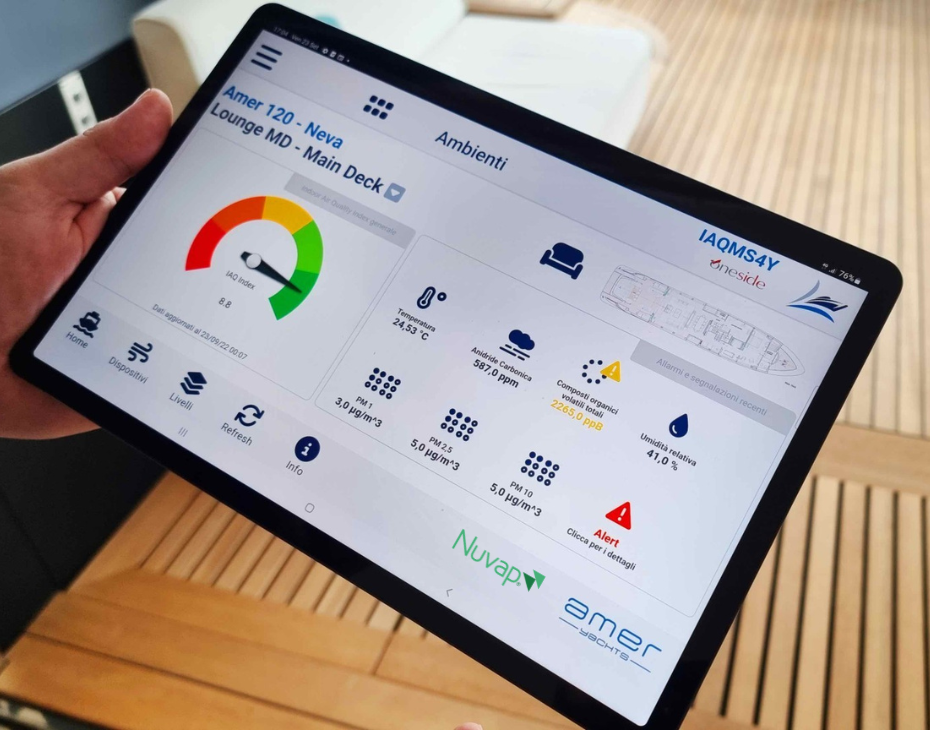School education has always played a central role in society. However, never before has there been a need to put the spotlight of the international community on the issues surrounding schools as centers of equitable, inclusive and quality learning, but also as sustainable and healthy places to ensure the health and well-being of all their occupants.
Indeed, the United Nations 2030 Agenda has introduced responsibility targets for schools, including “Ensuring health and well-being for all at all ages” and “Building resilient infrastructure, promoting sustainable and inclusive urbanization and improving innovation”.
For these reasons, indoor air quality issue in schools has become an important challenge that is requiring concerted actions by the National Health Service and the Government.
The National Study Group (GdS) Indoor Pollution has released a report describing the main strategies for planning and starting an effective and efficient indoor air quality monitoring plan, which allows to communicate the level of healthiness of environments and to lead towards improvement interventions.
It is recognized that any indoor environment can contain more pollutants that compromise the well-being, health, safety and productivity of its occupants than is commonly thought.
This is even more true in case of particularly vulnerable individuals, such as the elderly or people with chronic diseases. Children and young people are also among the most at risk groups because, they are still in a developmental phase, have weaker immune systems, immature tissues and organs and a higher respiratory rate; so the respiratory system becomes the target organ of all toxic substances in the air.
Health can be seriously or mildly compromised, in consideration of many factors (type of pollutant, type of individual, time of exposure to the substance,..). Among the more mild effects we find headaches, fatigue, eye-nose-throat irritation, reduction of cognitive abilities. These symptoms can have a negative impact also on learning skills and days spent at school. The same applies to teachers and other staff, for whom the lower physical and mental well-being affects work performance, increases absenteeism as well as health and care costs for the employee and the NHS.
Providing safe and healthy school environments is essential and requires careful planning of the intervention and renovation programs for buildings, paying attention not only to technical – functional specifications, but to health aspects too.
We often tend to invest exclusively in energy efficiency measures, without considering that the “isolation” of an environment facilitates the proliferation and accumulation of pollutants, to the detriment of health. An integrated approach that also includes indoor air quality, would allow to create sustainable, high-performance buildings, and to guarantee the well-being of the occupants throughout the entire building’s life cycle.
The usefulness of an air quality monitoring plan in schools
Planning an indoor air quality monitoring plan for school buildings allows to assess the risk of exposure of staff and students to toxic substances, identifying in a proactive way critical issues and improvement plans.
In concrete terms, the top management of the school organization, in charge of health and safety of people in the school, could have extremely useful information for the performance of their duties, such as:
- Knowledge in space and time of the concentration level of pollutants in the air (periods of occupation and non-occupancy).
- Assessment of the correct functioning of the air conditioning system and of the specific air changes for different areas.
- Verification of the accuracy of the maintenance and cleaning protocols.
- The identification of actions and measures to solve non-conformities.
- The verification of the impact and effectiveness of preventive and remedial measures identified.
In order to detect this data, it is fundamental that the air quality monitoring plan is well organized.
First of all, it is necessary to carry out a complete analysis of the building and tasks performed in it, determining:
- The type and number of pollutants to be detected.
- The choice of the monitoring operating modes (eg. continuous or fractional detection).
- The detection methods.




